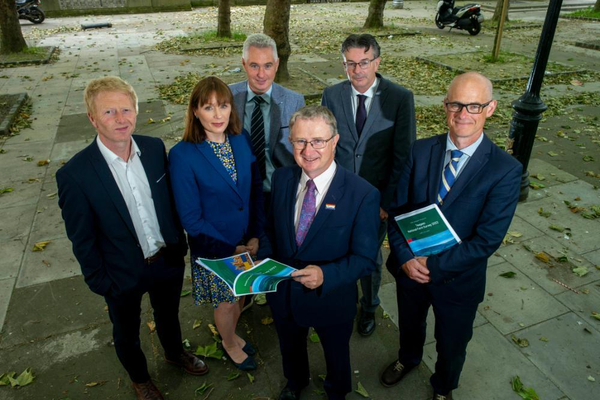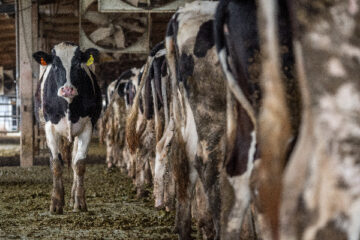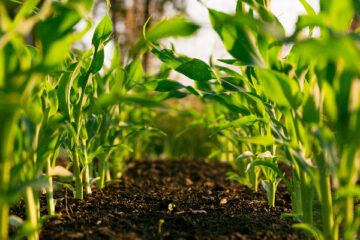The results of a new report indicate that the year 2022 produced a mixed outcome for income levels across farm systems in Ireland. Dairy and Tillage farms experienced sharp increases in farm income in 2022, largely due to high milk and cereal prices, in spite of rising production costs.
Dairy and Tillage farms were better able to cope with production cost increases than other types of farms. While cattle and sheep farms also saw the value of output increase, the rise in production costs left incomes in 2022 on many of these farms either lower or relatively unchanged on the previous year. The high rate of general inflation in Ireland over the last 18 months has also eroded the real value of income in all farm systems.
In 2022, several global events in combination had a substantial impact on international agriculture. There were sharp movements in global commodity prices including agricultural outputs, energy and agricultural inputs. Collectively these price movements had a substantial influence on farm incomes globally, including those in Ireland.
A high rate of global inflation emerged in 2022 as the world recovered from the COVID-19 lockdown. Furthermore, Russia’s illegal invasion of Ukraine particularly affected Europe’s energy market and also had an impact on the global supply of key grains and oilseeds. This high rate of inflation has continued into 2023.
As a result, higher agricultural input prices, in particular for fertiliser, fuel, electricity and concentrates caused a sharp increase in farm production costs in all farm systems. These events occurred alongside the more typical events which affect agricultural markets, such as variability in weather conditions.
Weather conditions in Ireland in 2022 were somewhat unfavourable for grass production over the summer period, but benefitted cereal crop production, leading to an overall increase in Irish cereal yields.
Across the key farm output categories in Ireland, cereal and milk prices performed best in 2022. Milk prices were up 49% in 2022 compared to 2021, while cereal crop prices increased by about 40%. Cattle prices also increased in 2022, by 10% for weanlings and 15% for prime cattle. The increase in lamb prices in 2022 was much more modest at about 2%.
Dairy system production costs reached their highest recorded level in 2022, increasing by 32%, reflecting a sharp rise in direct and overhead costs. While there was relatively little change in milk output volume in Ireland in 2022, significantly higher milk prices, resulted in an average dairy farm income of just under €151,000, an increase of 53%, or over €52,000, on the 2021 level. However, 1.45 family labour units were required to generate this income on the average farm, the highest labour requirement for any of the farm systems.
In the Cattle Rearing system, which comprises of farms that are mainly specialised in suckler beef production, the value of output increased by 6% in 2022, mainly due to higher cattle prices. Despite large reductions in the volume of fertiliser used and some reductions in the volume of concentrate feed use, the production costs on these farms increased by 13% on average in 2022. The average value of their support payments was down 5% on the 2021 level. Overall, the average Cattle Rearing income was just over €9,400 in 2022, down over 13%, or close to €1,500, compared with the 2021 level.
The ‘Cattle Other’ system, comprises mainly of beef finishing farms, but also includes farms selling store cattle. In this farm category, the average value of farm output increased by 25%, mainly due to higher finished cattle prices. Support payments on these farms were up 3% on average and this increase can be attributed to the introduction of the Fodder Support Scheme. Production costs on Cattle Other farms also rose in 2022 by 31% on average, with notable increases in both direct and overhead cost items. In combination, this resulted in an average income of just over €18,800 in 2022 for the Cattle Other system, an increase of 9%, or over €1,500, compared with the 2021 level.
The Sheep system experienced a 9% increase in the value of farm output on average in 2022. However, production costs rose by 24% on the average sheep farm in 2022, mainly due to higher prices for feed and fertiliser, as well as higher overhead spending. On average, the level of direct payments for Sheep farms was also down 4%. Overall, the rise in sheep system production costs far exceeded the increase in output value. As a result, the average income on Sheep farms was close to €16,500 in 2022, a decrease of 21%, or €4,300 relative to the record 2021 level.
Substantially higher cereal prices in 2022 helped to boost the value of tillage farm output, which increased on the average Tillage farm by 32%. Tillage farms experienced favourable weather conditions over the summer months which led to good crop yields. However, due mainly to higher expenditure on fertiliser, feed, contracting and overheads, production costs on tillage farms increased in 2022 by an average of 32%. Overall, the average income on tillage farms rose by 32%, or almost €19,000 in 2022 to reach almost €77,000.
Taking account of the income developments across the various farm systems, the average family farm income in Ireland rose by almost 32% in 2022 to about €45,800. However, it is important to emphasise that this increase is almost entirely attributable to the sharp rise in Dairy and Tillage farm incomes in 2022. A different perspective emerges when looking at income development in the drystock farming systems, with lower farm incomes reported on about half of all drystock farms in 2022.
As all of the income figures in this release are presented in nominal terms, the high rate of general inflation that has emerged over the last 18 months needs to be taken into consideration, as this has reduced the real value of those incomes. In 2022 inflation in Ireland was almost 8%, and this relates to Dairy and Tillage Farms.
Source: Teagasc



